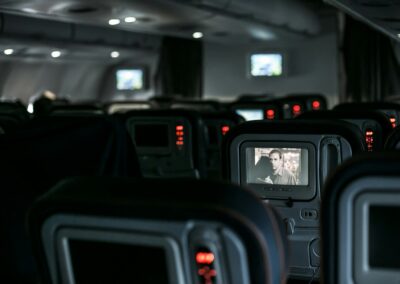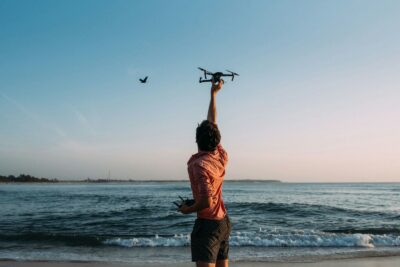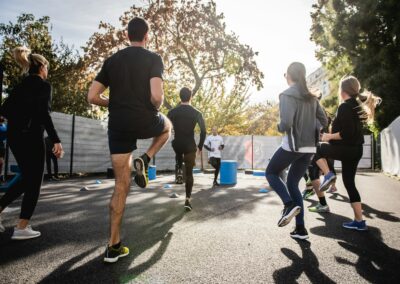Overcoming Technical and Design Barriers in VR Fitness Applications
Technical Limitations and Performance Issues
The development of Virtual Reality (VR) fitness programs faces significant challenges, particularly in terms of technical limitations and performance issues. VR technology demands high processing power, advanced graphics, and seamless interaction to create immersive fitness experiences. However, these requirements often result in performance issues such as lag, motion sickness, and suboptimal graphics quality, which can detract from the user experience.
To address these challenges, developers must focus on optimization techniques and leveraging cutting-edge hardware. Utilizing the latest VR platforms, such as Oculus and HTC Vive, can help deliver high-quality visuals and smoother performance. Moreover, developers should prioritize efficient coding practices and optimize resource usage to ensure the application runs smoothly on a wide range of devices. For instance, fitness enthusiasts in Riyadh and Dubai can enjoy a seamless VR workout experience even on mid-range VR headsets by incorporating cloud-based processing solutions that offload intensive tasks to powerful servers.
Another crucial aspect is managing motion sickness, a common issue in VR applications. Developers can mitigate this by implementing smooth and consistent frame rates, reducing latency, and incorporating user-friendly navigation systems that minimize abrupt movements. Providing users with adjustable comfort settings can also help tailor the experience to individual preferences, enhancing overall satisfaction and engagement.
Content Creation and Personalization
Creating engaging and personalized content for VR fitness programs presents another significant challenge. VR fitness applications require high-quality, interactive content that can motivate and engage users. This includes realistic 3D environments, dynamic workout routines, and responsive virtual trainers. Producing such content demands substantial time, expertise, and resources.
To overcome this challenge, developers can adopt modular content creation strategies, allowing for easy customization and updates. By developing a flexible content framework, fitness programs can be personalized to cater to different user needs and preferences. For instance, users in Saudi Arabia might prefer culturally relevant content that includes local landmarks and environments in their virtual workouts.
Additionally, incorporating user-generated content can enhance the VR fitness experience by providing a continuous stream of fresh and diverse material. Encouraging users to share their workout routines, tips, and experiences can foster a sense of community and engagement. Leveraging AI and machine learning algorithms can also help personalize the fitness experience by analyzing user data and adapting workouts to individual fitness levels, goals, and preferences.
User Experience and Interface Design
Ensuring a high-quality user experience in VR fitness programs involves addressing challenges related to user experience (UX) and interface design. VR fitness applications require intuitive and user-friendly interfaces that allow users to navigate and interact with the virtual environment effortlessly. However, designing such interfaces can be complex, as it involves integrating digital elements seamlessly into the physical workout space while maintaining usability and accessibility.
Developers must focus on creating clear and straightforward navigation systems that enable users to access workout routines, track progress, and interact with virtual trainers with ease. For example, users in Dubai should be able to start, pause, and customize their workouts with minimal effort and confusion. Providing visual and auditory feedback during workouts can also enhance the user experience by offering guidance and motivation.
Another critical aspect of UX design is accessibility. VR fitness programs should be inclusive and usable by people with varying levels of physical ability and technological proficiency. This includes incorporating voice commands, providing alternative input methods, and designing for ease of use by individuals with disabilities. Ensuring that the application is accessible to a broad audience can significantly enhance user satisfaction and engagement.
Strategies for Overcoming VR Fitness Development Challenges
Collaborative Development and Continuous Improvement
One of the most effective strategies for overcoming the challenges of developing VR fitness programs is fostering collaborative development and committing to continuous improvement. Collaboration between developers, fitness experts, and end-users can provide valuable insights and resources, ensuring that the VR fitness application is effective, engaging, and relevant.
For example, partnerships with fitness trainers and wellness experts in the UAE can facilitate access to exclusive workout routines, expert advice, and promotional channels, enhancing the application’s appeal and credibility. Regular feedback from users can also guide developers in identifying areas for improvement and implementing necessary updates. By adopting an iterative development process, developers can continually refine the application, addressing any issues promptly and enhancing the overall user experience.
Advanced Testing and Quality Assurance
Thorough testing and quality assurance are crucial for delivering high-quality VR fitness programs. Given the technical complexities and performance requirements of VR technology, rigorous testing across various devices, environments, and scenarios is essential. This includes both functional testing, to ensure that all features work correctly, and performance testing, to assess the application’s responsiveness and stability under different conditions.
Developers should employ both automated testing tools and manual testing procedures to cover all aspects of the application. Automated tests can efficiently handle repetitive tasks and simulate various user interactions, while manual tests provide valuable insights into real-world usage and user experience. Additionally, beta testing with a diverse group of users can uncover unexpected issues and provide practical feedback on the application’s usability and effectiveness.
Marketing and User Engagement Strategies
Effective marketing and user engagement strategies are vital for the success of VR fitness programs. To attract users and generate interest, developers must leverage various digital marketing channels, including social media, content marketing, and search engine optimization (SEO). For instance, promoting the application on platforms like Instagram and Facebook, where visually engaging content thrives, can significantly increase visibility and downloads.
Content marketing, such as creating blog posts, articles, and guides related to the application’s features and benefits, can establish the app as a valuable resource for fitness enthusiasts. SEO techniques, including optimizing the app’s website and content for relevant keywords, can improve search engine rankings and attract organic traffic. Keywords like “best VR fitness apps for Saudi Arabia” or “top VR workout programs in Dubai” can help potential users discover the application more easily.
User engagement can be further enhanced by incorporating gamified elements, user-generated content, and interactive features that encourage users to explore and share their experiences. Regular updates, new content, and exclusive offers can keep users engaged and ensure the application remains relevant and valuable over time.
Conclusion: Building High-Quality VR Fitness Programs
The development of VR fitness programs involves navigating various challenges, from technical limitations to content creation and user experience design. By prioritizing optimization, leveraging advanced technologies, and fostering collaboration, developers can create high-quality VR fitness applications that enhance the workout experience.
Effective marketing and continuous improvement are essential for maintaining user engagement and ensuring the application’s success. In dynamic regions like Saudi Arabia and the UAE, these strategies are particularly relevant for attracting tech-savvy fitness enthusiasts and providing them with innovative and immersive workout experiences.
Ultimately, the key to success lies in understanding and addressing the unique challenges of VR fitness development, delivering engaging and valuable experiences that motivate and delight users.
—
#VRFitnessChallenges, #VirtualRealityFitnessDevelopment, #HighQualityVRUserExperiences, #VRFitnessSolutions, #VRFitnessTechnology, #OvercomingVRFitnessChallenges, #VRFitnessPrograms, #RiyadhVRFitness, #DubaiVRFitness, #SaudiArabiaVRTechnology























